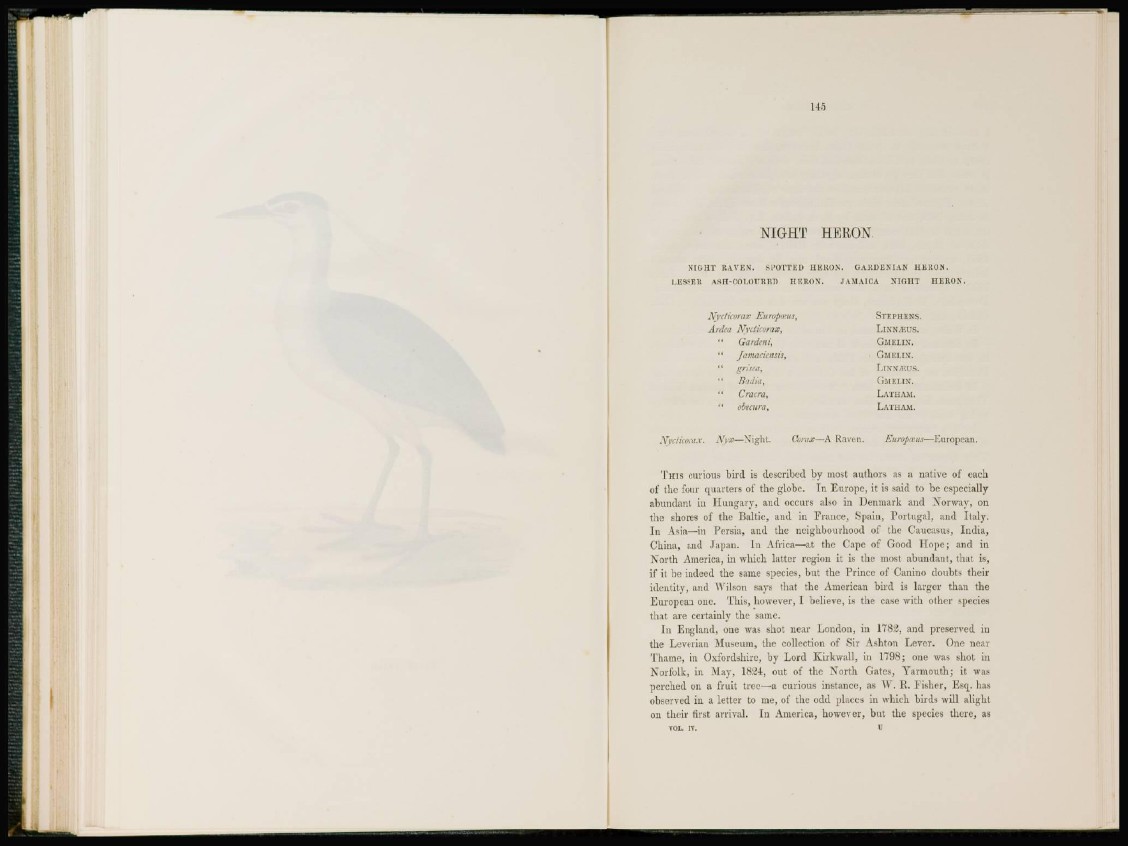
Uñ
NIGHT HERON.
NIGHT RAVEN. SPOTTED HERON. GARDE NIA N HERON.
ASH-COLOTJRET) HERON. JAMAICA NIGHT
Nyciicorax Europmus, STEPHENS.
Árdea Nyttkorax, LINK JEUS.
" Gardcni, GMELIN.
" Jamacüíisis, GMELIN.
'' grísea, LTNNJEUS.
" Bad ¿a, GMELIN.
" Crac ra, LATHAM.
" obscura, LATHAM.
Nyciicorax. Ny®—Night. Qoracs—A Raven. Europmus—European.
THIS curious bird is described by most authors as a native of each
of the four quarters of the globe. In Europe, it is said to be especially
abundant in Hungary, and occurs also in Denmark and Norway, on
the shores of the Baltic, and in France, Spain, Portugal, and Italy.
I n Asia—in Persia, and the neighbourhood of the Caucasus, India,
China, and Japan. In Africa—at the Cape of Good Hope; and in
North America, in which latter region it is the most abundant, that is,
if it be indeed the same species, but the Prince of Canino doubts their
identity, and Wilson says that the American bird is larger than the
European one. This, however, I believe, is the case with other species
that are certainly the same.
I n England, one was shot near London, in 1782, and preserved in
the Leverian Museum, the collection of Sir Ashton Lever. One near
Thame, in Oxfordshire, by Lord Kirkwall, in 1798; one was shot in
Norfolk, in May, 1824, out of the North Gates, Yarmouth; it was
perched on a fruit tree—a curious instance, as W. R. Fisher, Esq. has
observed in a letter to me, of the odd places in which birds will alight
on their first arrival. In America, however, but the species there, as
VOL. IV. V